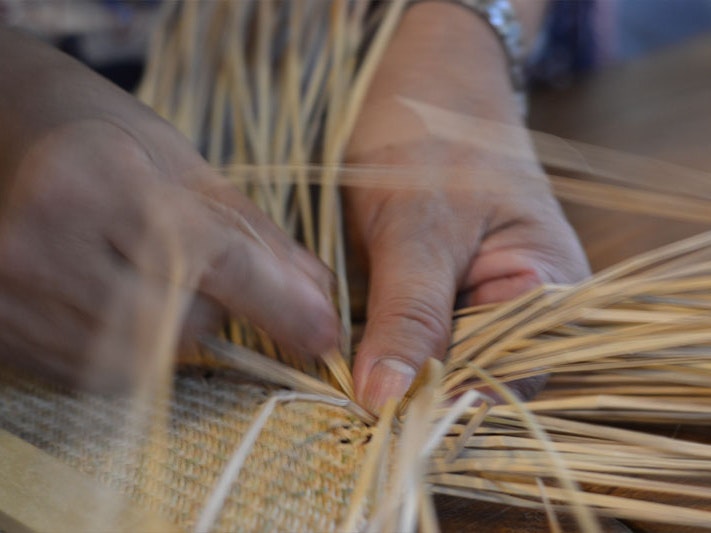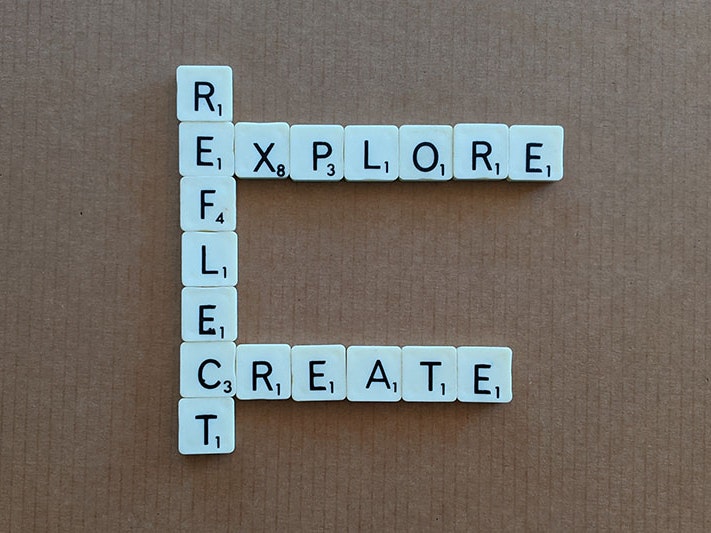
Introduction
Read an introduction to this learning resource, and the artwork that inspired it.
Free museum entry for New Zealanders and people living in New Zealand
Open every day 10am-6pm
(except Christmas Day)
Free museum entry for New Zealanders and people living in New Zealand
From the Past, for Tomorrow offers place-based, learner-led approaches that give life to the front end of The New Zealand Curriculum.
From the Past, for Tomorrow is underpinned by three guiding principles: place-based learning, learner-led action, and critical citizenship.
Together, they embody the principles outlined in The New Zealand Curriculum (NZC).
From the Past, for Tomorrow connects Te Papa exhibitions and art collections with learners’ lived experiences in their communities and context.
This place-based approach gives life to the community engagement principle in the curriculum. The resource seeks to provide meaningful and relevant connections to learners’ lives; reflect the values and aspirations of parents, whānau, and the wider community; and contribute to schools establishing strong partnerships with their parents, whānau, and wider community.
The integrated, place-based approaches to learning provide braided ways in which learners can understand key concepts across a number of learning areas. This gives life to the coherence principle of the curriculum. The resource creates links across and within learning areas, and connects new learning to prior and known experiences, as well as to the local world.
From the Past, for Tomorrow provides opportunities for learners to lead their own learning, particularly within the Create section. This principle gives life to the inclusion principle of the curriculum. The resource seeks to be inclusive by design and from the outset – ensuring that equitable and multiple learning opportunities are created for learners.
Providing opportunities for learners to design their own learning, and develop their criteria for success, gives life to the learning to learn principle of the curriculum. The resource creates space for learners to set challenging learning goals and for meaningful reflection to take place in relation to the learning that occurs.
Learner-led action also gives life to the high expectations principle of the curriculum. By providing opportunities for learners to develop their agency, a number of valued outcomes are addressed. These include the development of social skills and outcomes relating to hauora and cultural identity.
Finally, From the Past, for Tomorrow seeks to give life to the future focus principle of the curriculum by encouraging learners to recognise they not only have a stake in the future, but they also have a role and responsibility to help shape it.
From the Past, for Tomorrow recognises the impact of colonisation on our collective story, and seeks to decentre dominant Pākehā understandings, particularly in our relationships to land, water, and air. This gives life to the curriculum’s Treaty of Waitangi principle.
From the Past, for Tomorrow encourages learners to examine our collective stories to identify, and address, missing voices or perspectives within our school communities. This gives life to the cultural diversity principle of the curriculum. The resource seeks to provide teaching and learning experiences that affirm learners’ cultural identities and help them to understand and respect diverse viewpoints, values, customs, and languages.
From the Past, for Tomorrow cultivates all the values of the NZC, in particular:
innovation, inquiry, and curiosity by thinking critically, creatively, and reflectively
diversity through the active celebration of cultures, languages, and heritages
equity through examining issues of fairness and social justice, particularly in relation to the impact of colonisation
community and participation in relation to our local contexts
integrity through being responsible and accountable to each other and this place
respect for ourselves, each other, our shared futures, and our collective human rights.
From the Past, for Tomorrow uses rich tasks to unpack an integrated inquiry journey. These rich tasks weave the key competencies with knowledge and skills from a number of learning areas.
“Rich tasks include a conceptual focus and a ‘doing’ focus that draws on aspects of all the key competencies. However, it is hard to focus the intended learning if we just say every key competency is in play.
This is where the idea of capabilities can help. A ‘capability’ is demonstrated in action. It is what the student shows they can do – and is willing to do – as a result of their learning.”
– Rosemary Hipkins, Weaving a coherent curriculum, 2017
Suggested tasks within each kete in the inquiry ensure that learners are developing four of the major capabilities outlined by Hipkins:
making meaning in discipline-specific ways
developing the capability of perspective-taking
developing capabilities for critical inquiry
taking action (living and contributing as active, engaged citizens in the world).

Read an introduction to this learning resource, and the artwork that inspired it.

This resource weaves together learning areas from the NZC, using high impact practices within local curriculum, such as developing community relationships for learning.

This resource uses two main inquiry arcs – a content-rich exploration, and then in response, active learner-led creation. Reflective activities are integrated throughout.